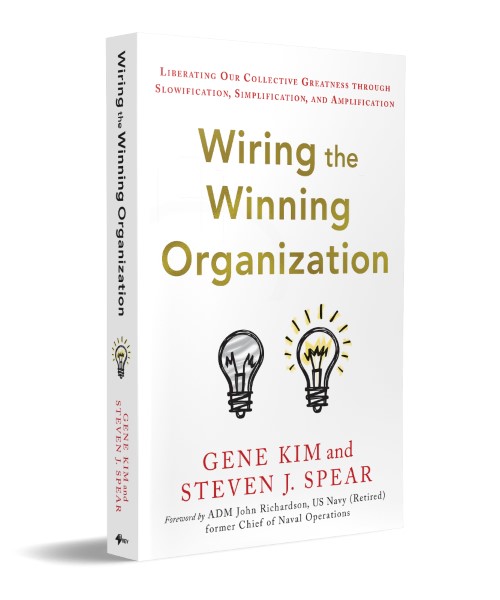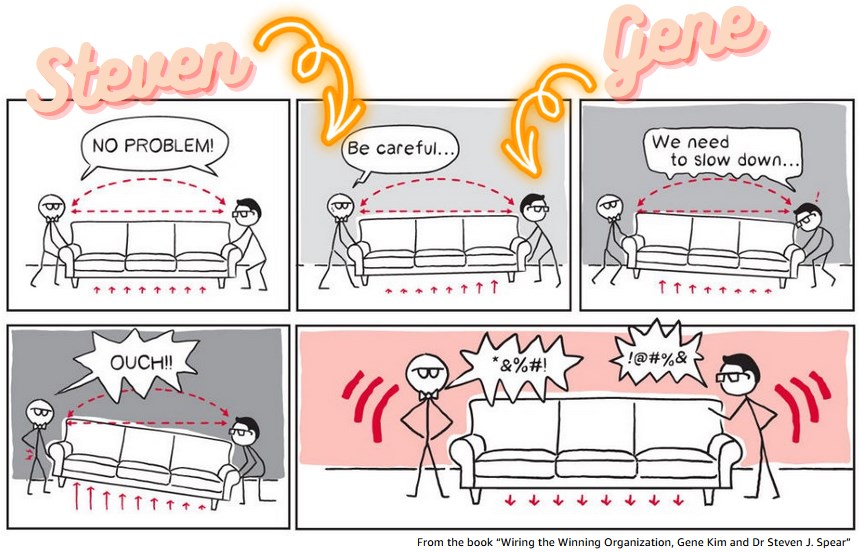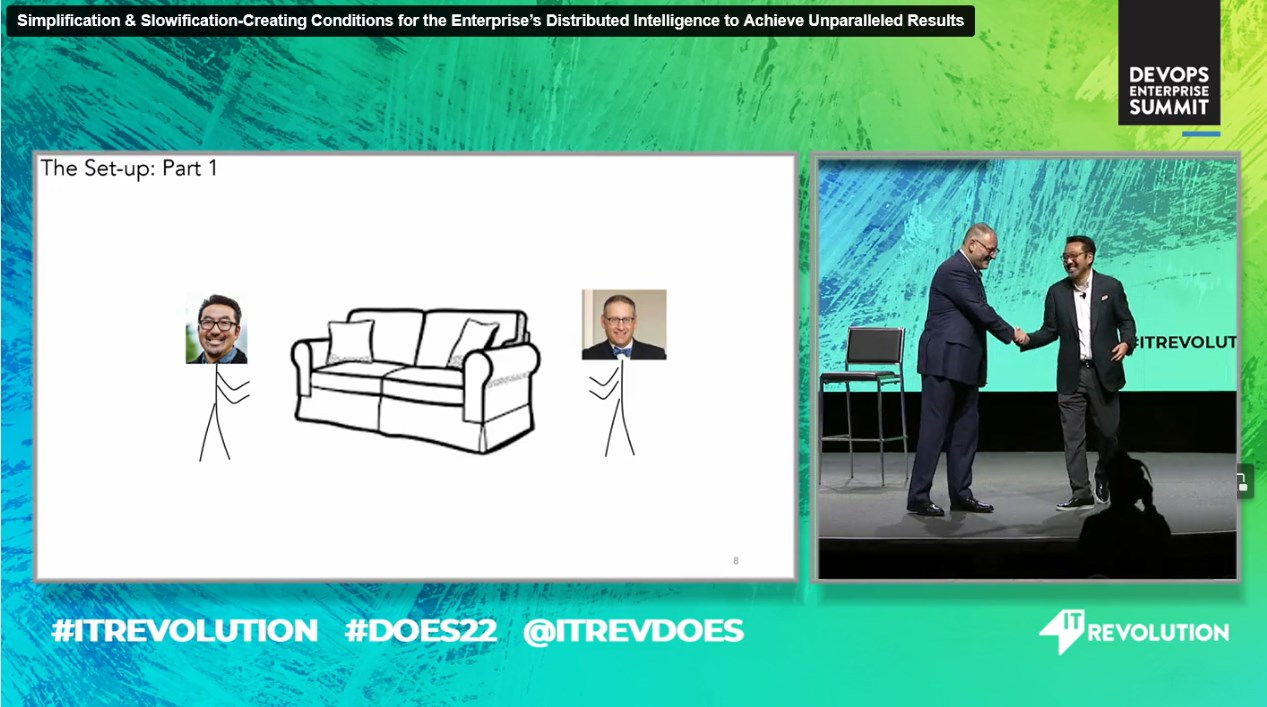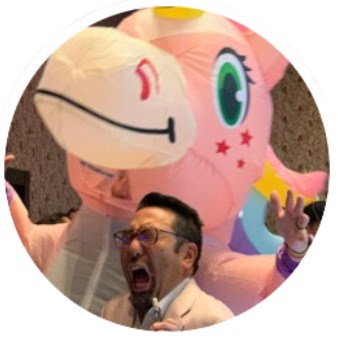💡 Wiring the Winning Organization - Book Review
The new book from Gene Kim and Steven J. Spear "Wiring the Winning organization" is out. I was privileged to get an early copy, so that I can give my honest opinion. Here it is: it's not for everyone, but an absolute must read for senior leaders who want to understand the difference between a winning organization and a losing one, and do something about it.

The authors - Gene Kim and Dr Steven J. Spear
Gene Kim is a reknown book author in the IT industry. "The Phoenix Project" (more than a million copies since 2013, and a book I bought many copies for my customers as discussion starters), "The DevOps handbook ", and later "The Unicorn Project " have been instrumental in the DevOps movement, and shaped the way we think about IT and business.
Gene Kim did not wrote the book alone. He is joined by Dr Steven J. Spear , who shared the stage many times with Gene during the DevOps Enterprise Summit conferences. It really is work were Gene and Steven brought their own expertise and experience (itself inspired by a lot of earlier material), inspired each other, to eventually come up with a simple theory which makes sense.
Where the audience for "The Phoenix Project" was IT Operations, software developers for "The Unicorn Project", "Wiring the Winning Organization" (WWO) is for the most senior leaders in an organization.
Let's dive in. 🤿
Conclusion first
Let's go straight to the conclusion. "Wiring the Winning Organization" will give you keys to understand why some organizations are winning, and others are not. The book provides a theory with a set of 3 mechanisms leaders can use to "wire" the organization: Slowification, Simplification and Amplification.
Personally, the book is a new reference which helped me connect many concepts. Concepts that I learned and helped my customers apply over the years, such as Lean, Agile, DevOps, Amazon mechanisms and two pizza teams, Team Topologies, Toyota Production System, Resilience Engineering, Developer Experience, and many more. It also gives me a mental model to structure my thinking about organizations, pinpoint issues, and propose solutions based on the theory and the many case studies presented in the book.
I would like to emphasize that this book is not for everyone: developers, IT operations, and even middle managers who are busy getting work done in a broken organization won't find much value in this book. Instead, in case you recognize yourself, buy the book and put it on the desk of your VP or SVP, and have lunch with them to talk about it. If you are one of those senior leaders, the book can help you having meaningful conversations, recognize "danger zones", and equip you with mechanisms to head your organization back toward the "winning zone".
The book
After a rather long intro on organizational performance, the book provides a theory - well, 3 theories really: Slowification, Simplification and Amplification (SSA).
Slowification is about pausing performance so that you can solve problems in planning and practice. At Amazon, one way we do this is to run Game Days, as defined in our "Well-Architected Framework":
A game day simulates a failure or event to test systems, processes, and team responses. The purpose is to actually perform the actions the team would perform as if an exceptional event happened. These should be conducted regularly so that your team builds "muscle memory" on how to respond. Your game days should cover the areas of operations, security, reliability, performance, and cost.
Simplification makes problems themselves easier to solve by breaking large, complex situations into smaller, more manageable pieces. If I relate again to Amazon, we organize around the concept of "two pizza teams", which is a team small enough to be fed by two pizzas. We work by increments (another way to break down complexity), and modularize our systems so that we can work on them independently. See the Well-architected framework
Amplification is the act of calling out problems loudly and consistently so that help is triggered to contain and investigate them. My most recent experience with this is how we replicated the "Andon cord" from Toyota in our consulting practice. I can tell you that we will not hesitate to pull the Andon cord in case we find a security issue, or a problem with the customer's architecture. We will stop the work, and call for help. We will not hesitate to escalate to the customer's leadership if we don't get the help we need. This is not always easy, but it is the right thing to do.
Each theory is followed by case studies from not only the tech sector (Amazon, Google), but also from manufacturing (Toyota), healthcare, and even the military (US Navy).
In addition to SSA, the book introduces the concept of "layers" in an organization, and how they interact with each other. The layers are "Technical objects" (objects that people work on), "Tools and Instrumentation" (which we use to work on layer 1 objects), and "Social Circuitry" (processes, procedures, norms and routines: the human layer that overlays the technical layers).
How do you assess where you are? This is where the notions of "Winning Zone" and "Danger Zone" come into play. Gene and Steven will give you clues to determine in which zone your organization stands, and if needed how to move it to the "winning zone".
I am a visual person, and I particularly liked that the book was illustrated. I found classics such as Venn diagrams, but also comics strips where we could easily recognize Gene Kim and Dr Steven J. Spear. 😁

Where do you get started?
Interested? Let's see how you can get started. It's interesting to see that nowadays, the book is not the only medium to get into the theory, learn from the use cases and get your organization in the winning zone.
- You can buy the book, and read it. Start to finish. I got it on Kindle, and I am glad I did. I can highlight, and easily go back to the highlights (all my highlights are retrieved in my Obsidian notebook). I can also search for keywords, and find the relevant sections.
- You can get the reader's guide with a summary for the
- Start with a large, watermarked excerpt to give you a good taste of the book
- Watch the recording of Gene and Steven's talk at DevOps Enterprise Summit 2022 (don't miss part 2)


